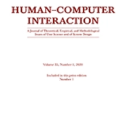Although inequities and biases relating to people in low socioeconomic situations are starting to capture widespread attention in the popular press, little attention has been given to how such inequities and biases might pervade technology user experiences. Without understanding such inequities in user experiences, technology designers can unwittingly introduce inequities tied to users' socioeconomic status (SES). To enable the HCI community to address this problem, in this paper, we consider a wide body of research that contributes to how a user's socioeconomic status potentially shapes their interactions and user experiences. We organize that research into 20 aspects of socioeconomic status; then derive a core set of five SES "facets" (attribute types and value ranges) with differing impacts on user experiences for different SES strata; and finally, present actionable paths forward for HCI researchers and practitioners to draw upon these facets, to bring socioeconomic awareness to HCI.
翻译:虽然与社会经济地位低的人有关的不平等和偏见开始在大众报刊上引起广泛关注,但很少注意这种不平等和偏见如何渗透技术用户的经验。技术设计者不理解用户经验中的这种不平等,便会无意中引入与用户社会经济地位挂钩的不平等。为了让HCI社区解决这一问题,在本文件中,我们考虑开展广泛的研究,帮助用户的社会经济地位如何影响他们的互动和用户经验。我们组织了20个社会经济地位方面的研究;然后产生了一套核心的5 SES“脸”(属性类型和价值范围),对不同SES阶层的用户经验产生不同影响;最后,我们为HCI研究人员和从业人员介绍这些方面,向HCI提供社会经济意识。





